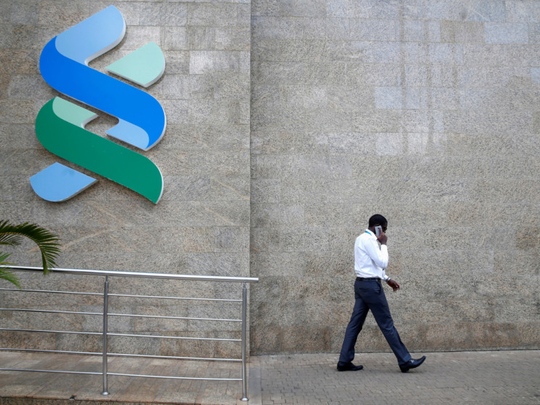
Hong Kong, London: Standard Chartered Plc beat expectations with a 20 per cent rise in first quarter pre-tax profit on Wednesday, but disappointing income showed the long road ahead for its returns to hit targets after years of restructuring.
Pretax profit for StanChart, which focuses on Asia, Africa and the Middle East, rose to $1.26 billion in the quarter to the end of March, from $1.05 billion in the same period a year ago, helped by improvements in asset quality.
However revenues — closely watched by investors who want to see growth driven by income rather than lower impairments — fell short of market expectations at $3.9 billion, despite being the bank’s best since the second quarter of 2015.
This underscores the challenge for StanChart in meeting its already modest targets.
“Overall the key disappointment will be that the strong income start flagged at the full year hasn’t persisted,” said Richard Smith, analyst at KBW in London.
The first-quarter profit jump follows some early signs of success including a return to dividend payments, for StanChart, which has undergone a sweeping restructuring under the leadership of Chief Executive Bill Winters since 2015.
StanChart shares rose 1 per cent in London by 0745 GMT, echoing earlier gains in the lender’s Hong Kong-listed shares.
StanChart in February unveiled a new medium-term goal of an 8 per cent return on equity, as it recovers from a restructuring that saw the key profitability metric fall into the negative. It has not announced the timetable for achieving the goal.
No shortcuts
Achieving the target will involve improving income across all of the bank’s main business lines, with the first quarter showing mixed results.
While income for its private banking business climbed 23 per cent from the same first-quarter period a year ago, albeit off a low base, income in the key financial markets trading business rose only 2 per cent.
That compares with record profits for the quarter posted by US investment banks, which reaped bumper trading profits in the first two months of the year as investors reacted to volatility across stock, bond, currency and commodity markets.
StanChart posted an annualised return on equity of 7.6 per cent in the March quarter, compared to 6.3 per cent in the first quarter of 2017.
“There are no shortcuts but we are gathering momentum and gaining in confidence,” Finance Director Andy Halford told reporters on a conference call on Wednesday.
StanChart did show continued signs of improving its balance of bad loans, with net impairment on financial assets in the quarter 29 per cent lower than in the previous period.
Losses from bad debts had plagued StanChart in the recent past, but the bank has since tightened limits on who can make decisions about such big loans and decreased internal limits for exposure to a single client.










